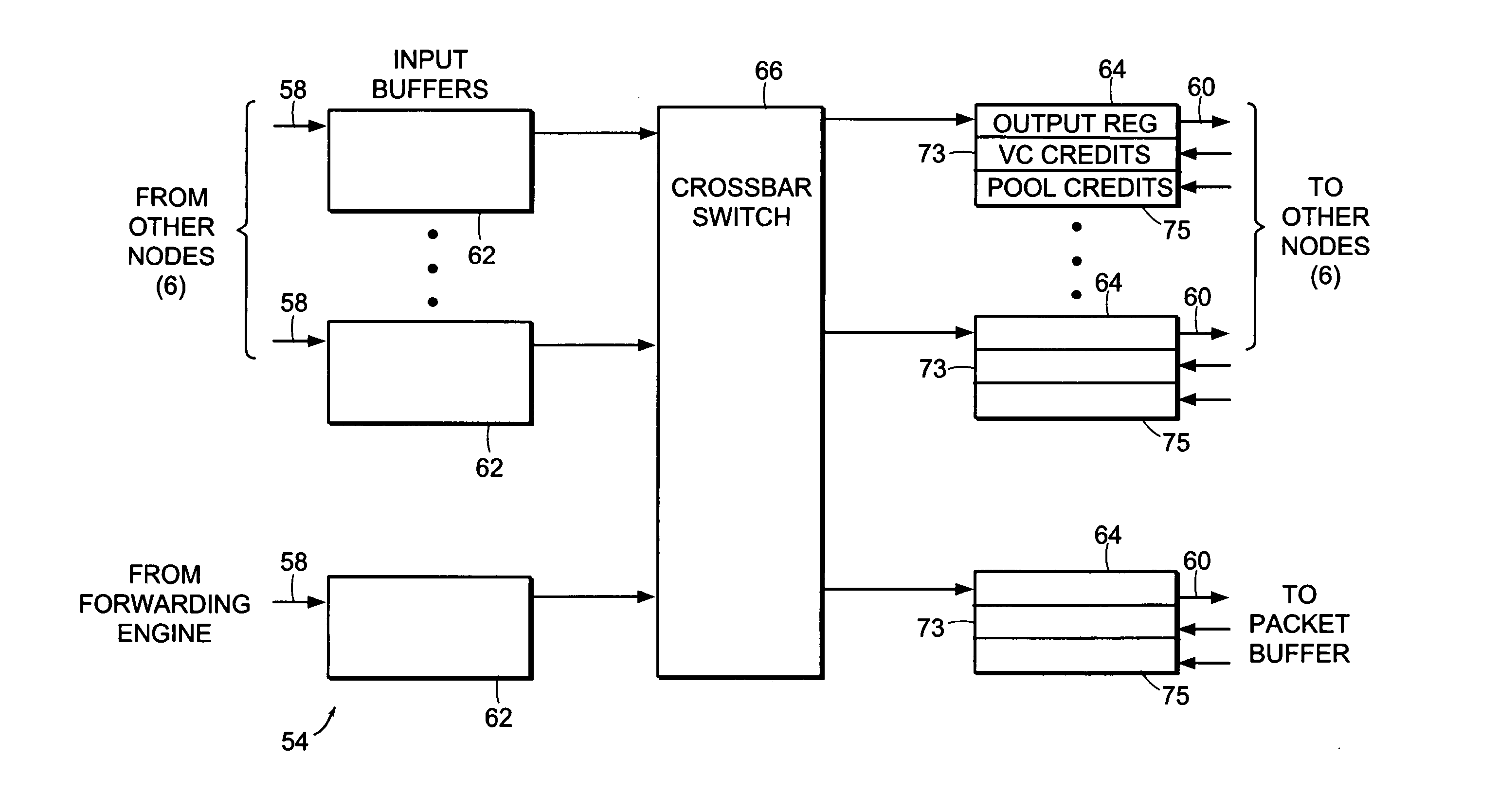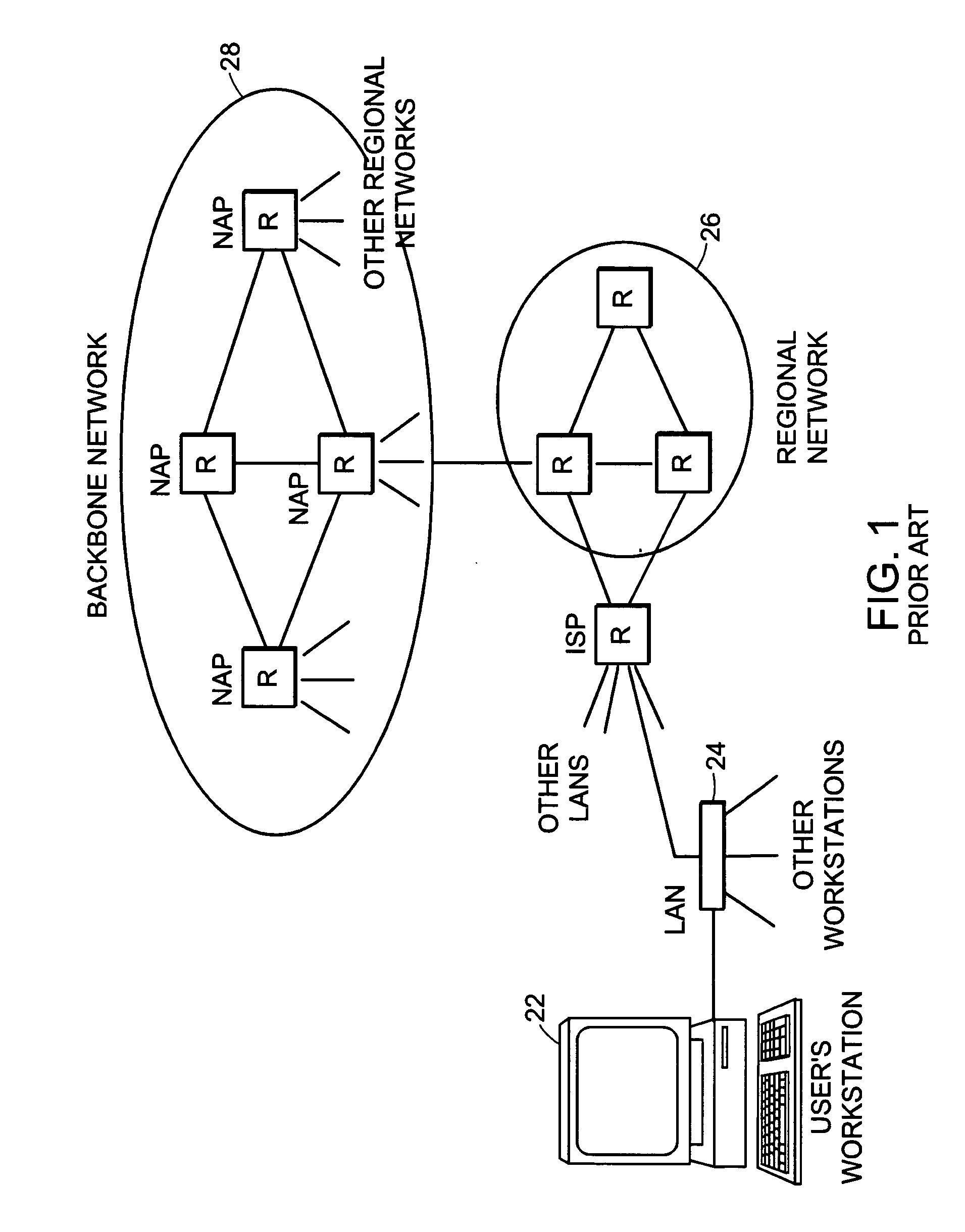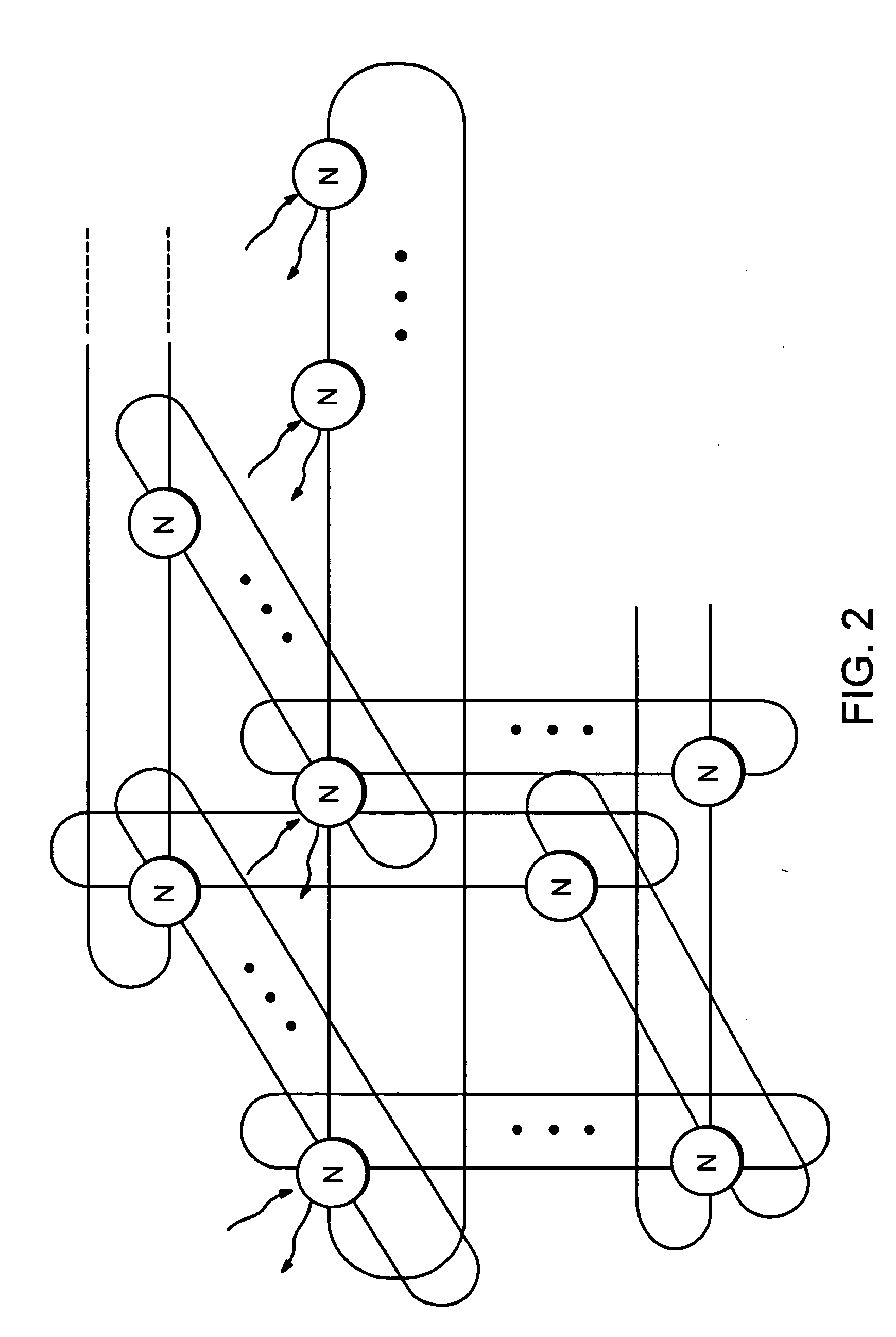Fabric router with flit caching
a fabric router and caching technology, applied in the field of interconnection networks, can solve the problems of inability to implement single-chip fabric routers with large number of inability to achieve single-chip fabric routers with large virtual channel buffers, and inability to achieve large-scale virtual channel buffers. large, the effect of reducing the number of virtual channel buffers
- Summary
- Abstract
- Description
- Claims
- Application Information
AI Technical Summary
Benefits of technology
Problems solved by technology
Method used
Image
Examples
Embodiment Construction
[0025] Although the present invention is applicable to any router application, including those in multicomputers, multiprocessors, and network switches and routers, it will be described relative to a fabric router within an internet router. Such routers are presented in the above-mentioned PCT application.
[0026] As illustrated in FIG. 1, the Internet is arranged as a hierarchy of networks. A typical end-user has a workstation 22 connected to a local-area network or LAN 24. To allow users on the LAN to access the rest of the internet, the LAN is connected via a router R to a regional network 26 that is maintained and operated by a Regional Network Provider or RNP. The connection is often made through an Internet Service Provider or ISP. To access other regions, the regional network connects to the backbone network 28 at a Network Access Point (NAP). The NAPs are usually located only in major cities.
[0027] The network is made up of links and routers. In the network backbone, the lin...
PUM
 Login to View More
Login to View More Abstract
Description
Claims
Application Information
 Login to View More
Login to View More - R&D
- Intellectual Property
- Life Sciences
- Materials
- Tech Scout
- Unparalleled Data Quality
- Higher Quality Content
- 60% Fewer Hallucinations
Browse by: Latest US Patents, China's latest patents, Technical Efficacy Thesaurus, Application Domain, Technology Topic, Popular Technical Reports.
© 2025 PatSnap. All rights reserved.Legal|Privacy policy|Modern Slavery Act Transparency Statement|Sitemap|About US| Contact US: help@patsnap.com



